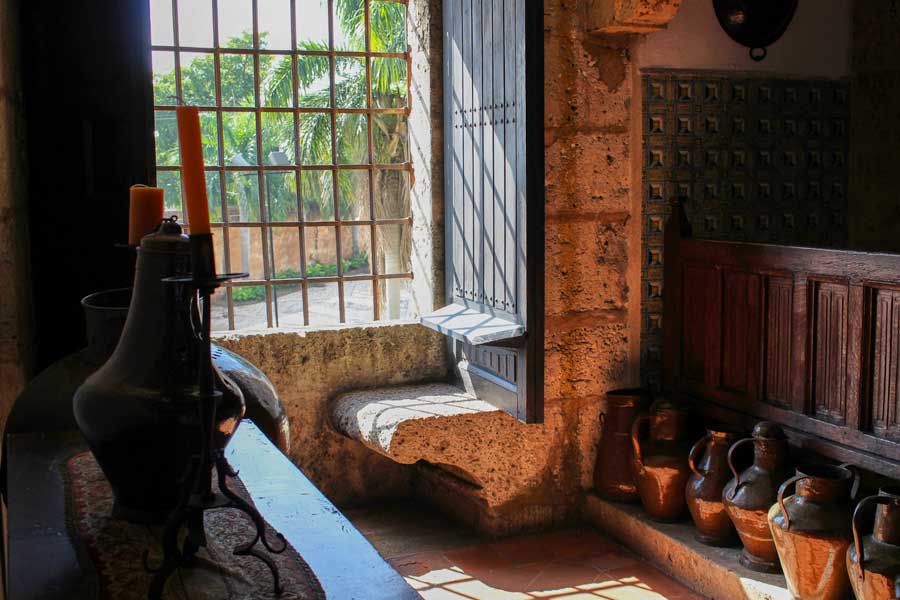History & Heritage
Alcázar de Colón: Dominican History Lives Here
Alcázar de Colón, Santo Domingo
Photo: Angel Rosario
Step into the historic world of Santo Domingo for a personal experience of how it all began
The history of Santo Domingo is defined by its old-world emblematic structures that - at their time- marked the beginning of a new era on the island of Hispaniola. Among its most notable sites is the still-standing Alcázar de Colón. The first official royal residence of the Spanish ruling class in Dominican History.
Although the days of glory and reaping were cut short for Cristobal Colón (Christopher Columbus), his eldest son Diego Colón would become 2nd admiral, 2nd viceroy, and 4th governor of the indies. Later he established his first palace in what is now the Zona Colonial or Colonial Zone.
The first royal family of Santo Domingo
The beginning of the 1500s was a tumultuous time to live in the newly formed Santo Domingo, with the likes of pirates, profiteers, and invading naval forces constantly assaulting for dominance of La Hispaniola. This unsafety prompted King Ferdinand ll of Aragón to commission the construction of a fortified palace upon the arrival of Diego Colón and his wife Maria Alvarez de Toledo in 1509 - the daughter of prominent Spanish nobility.
Here they raised seven children and lived in what can be considered a privileged position in society. However, Diego passed away during a trip to Spain in 1526, and Maria, now widowed, lived in the palace until her death in 1549. The Colón family remained at the Alcázar for another three generations. After this time, the city was sacked by British pirates, most notably Sir Francis Drake, who presumably took family items from the residence.
With the constant power struggles for Santo Domingo, the Alcázar Colón was left in ruins - leading to its declaration in 1870 as a national monument to conserve what remained of the iconic site. The structure seen today is a reconstruction undertaken by the architect from Madrid, Javier Barroso, to restore the palace to its former glory.
Architectural style for the times
Construction of the Alcázar officially began in 1510 - and although the original architect is unknown to this day - we know from archeological evidence that he employed the Gothic Mudejar style for its overall structure, with a note of Isabelino influence.
The Alcázar's doorways and arches are evidently renascentista - coinciding more with the period. The 55-room structure's facade is adorned with Coraline stone workmanship, becoming a symbol of privilege and honor for the mansion's high-profile guests like Hernan Cortez. Now a museum dedicated to its turbulent history, only 22 rooms are accessible with intriguing period artifacts.

Interior view of Alcázar de Colón, Santo Domingo
Photo: Shutterstock
Take a look inside
Upon entering, you'll be immediately surprised by the beautiful old-world energy the main hall emits, with refreshing black and white designed marble flooring and polished walnut carved tables. Also decorating the walls are matching portraits of Diego Colón and his wife, Maria de Toledo. Walking through the stone arches into the next room is like traveling through time as a life-size Spanish nobleman in shining armor sits atop his steed, holding a lance.
Moving along the principal floor is a mannequin installation exhibiting official renaissance dress wear for nobles of the time. Behind the exhibit is a tapestry depicting similar gowns and wardrobe showcased, while other rooms include actual colonial instruments, like a harp and Spanish guitar, along with other artifacts like pottery, swords, and rifles.
Heading upstairs are the master bedrooms and studies, where you'll see Diego's original bedpost along with hardwood drawers, and Maria's room is more quaint. It was customary for married nobles to sleep in individual spaces. Looking out from the rear terrace is a spectacular view of the port of Santo Domingo towards the Ozama river. Then, crossing over to the front terrace is a full view of Plaza España and the surrounding colonial structures.
It's important to note that Diego Colón actually owned only a few artifacts displayed within. The rest are real renaissance antique pieces shipped in from Spain in order to recreate the era.
Nearby attractions
Museum of the Royal Houses
An excellent follow-up visit from the Alcázar Colón is the Museo de las Casas Reales, for its wide range of pre-colonial, colonial, and victorian artifacts. These relics tell the story of brutal slavery, Taíno assimilation, and power struggles between European nations fighting for control of Hispaniola.
Catedral Primada de América
A couple of streets from the Royal Houses Museum is the very first Catholic Cathedral built in all of the Americas, La Catedral Primada de America - an architectural masterpiece for its time and a pilgrimage site for religious followers.
Ozama Fortress
On the banks of the Ozama river in Zona Colonial is Fortaleza de Ozama. This fortress was built as a fortified guest house, where different Spanish governors and noble people would stay because of the constant threat of invasion or piracy.
Written by Omar Guzman.
Published December 2022.
Find Alcázar de Colón
External Links
Categories
[categories_for_post id='article-related-categories']
Tags
[tags_for_post id='article-related-tags']
Share
Six Beautiful Beaches near Santo Domingo
Touring the capital city of Santo Domingo can be an exciting experience for curious urban explorers - but after a day of scouring the streets for National treasures and visiting the local shops - you'll be left to wonder.... where's the beach?
Playa Hemingway beach near Santo Domingo
Photo: Angel Rosario
Looking for some cool things to do?
Subscribe to our newsletter
Get more travel inspiration, tips and exclusive offers sent straight to your inbox
[yikes-mailchimp form=”1″]
